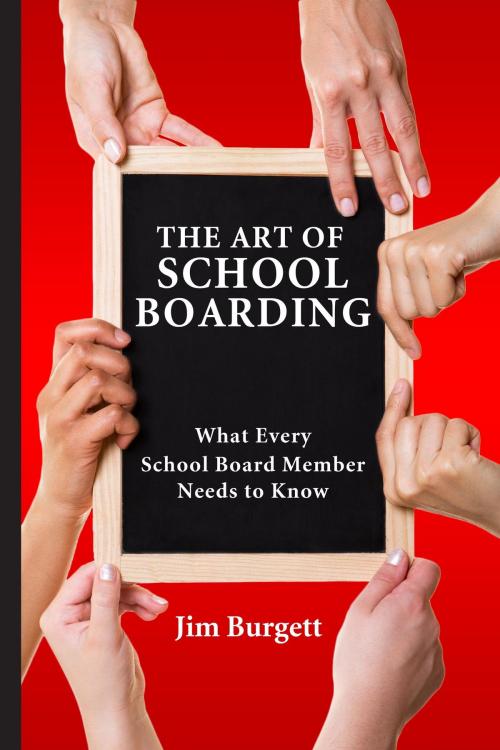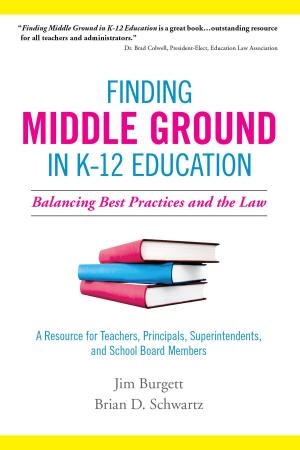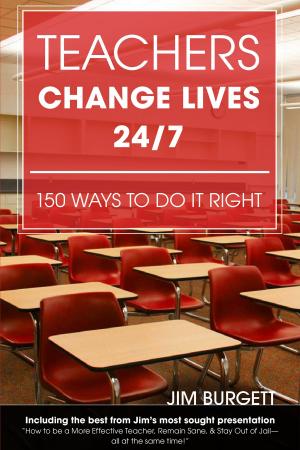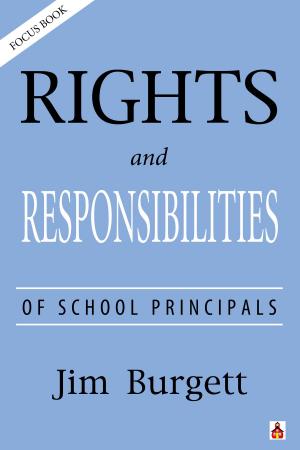The Art of School Boarding: What Every School Board Member Needs to Know
Nonfiction, Reference & Language, Education & Teaching, Administration| Author: | Jim Burgett | ISBN: | 9780989653046 |
| Publisher: | Gordon Burgett | Publication: | September 19, 2013 |
| Imprint: | Smashwords Edition | Language: | English |
| Author: | Jim Burgett |
| ISBN: | 9780989653046 |
| Publisher: | Gordon Burgett |
| Publication: | September 19, 2013 |
| Imprint: | Smashwords Edition |
| Language: | English |
School board rookies or veterans, superintendents, administrators, and the education-guiding citizenry are the reading targets for Jim Burgett’s newest K-12 book (of six). The Art of School Boarding should also be mandatory reading for candidates seeking school board election.
As Burgett explains in easy-reading detail, being a school board member is not a political position, nor one of royalty. It’s held in modest esteem. Board members deal with families, law, curricula, finances, mandates, athletics, the fine arts—the list goes on. No pay, tough issues, lots of controversy, much reading—oh yes, the future of the community is also in its hands.
“School Boarding” is an art. Boards have their own purpose, means, personality, process, and protocol. These pages discuss the basics of this particular boardsmanship, and school governance, the role of the board, its members, and the administration. It explains ethical expectations, a specific Code of Conduct, and how the board handles community concerns and builds relationships. Dozens of case studies also provide examples and insight from other, veteran board members and administrators.
The common sense of these straightforward, jargon-free pages explains what present or future board members must know.
Twelve words or phrases capture the core of The Art of School Boarding: leadership, superintendent selection, vision, morale standards, relationship building, trust, policy development, the law, ethics, educational support, setting expectations, and the chain-of-command.
This is the book’s table of contents:
-
Boarding Basics
What does a Board Member Do?
How much time is involved?
What are the pros and cons of Boarding? -
Why Does Anyone Want to Board?
Know Why You Want to Serve
The School Boarding Questionnaire -
The Foundational Principles of School Governance
The Board Clarifies the Purpose
The Board Connects with the Community
The Board as Employer
The Board as Delegator
The Board as Monitor
Fundamental Boarding Responsibilities -
Board Roles and Superintendent Roles
What does the Board Do?
What does the Superintendent Do?
What is the Relationship? -
Boarding Code of Conducts
Formal Codes
Common Sense Codes -
Know the Chain of Command
Memorize the Organizational Chart
Direct Others to the Process -
Learn the Art of Receiving and Responding to Complaints
Catching the Complaint
Throwing the Complaint -
Never Forget Who Comes First
Rethink Your Reasons
Analyze Your Actions
Stabilize Your Center -
Money Matters
Understand Your Role with Money
Know the Importance of Financial Stability -
Programs and Growth
Understand the Fundamentals of Schooling
Understand Growth -
Relationships
-
School Boarding at it’s Best
Characteristics of an Exemplary Board Member
Your Legacy -
Expert Advice
-
Taking Care of You
-
The Ride
Jim Burgett regularly speaks nationwide to school administrators, teachers, and board members throughout the United States. He is also the author of Teachers Change Lives 24/7 and coauthor of Finding Middle Ground in K-12 Education, What Superintendent and Principal Needs to Know, and The Perfect School. For 40+ years Burgett has taught and served as principal and superintendent at the elementary, middle, and high school levels. He was twice named administrator of the year by his peers.
School board rookies or veterans, superintendents, administrators, and the education-guiding citizenry are the reading targets for Jim Burgett’s newest K-12 book (of six). The Art of School Boarding should also be mandatory reading for candidates seeking school board election.
As Burgett explains in easy-reading detail, being a school board member is not a political position, nor one of royalty. It’s held in modest esteem. Board members deal with families, law, curricula, finances, mandates, athletics, the fine arts—the list goes on. No pay, tough issues, lots of controversy, much reading—oh yes, the future of the community is also in its hands.
“School Boarding” is an art. Boards have their own purpose, means, personality, process, and protocol. These pages discuss the basics of this particular boardsmanship, and school governance, the role of the board, its members, and the administration. It explains ethical expectations, a specific Code of Conduct, and how the board handles community concerns and builds relationships. Dozens of case studies also provide examples and insight from other, veteran board members and administrators.
The common sense of these straightforward, jargon-free pages explains what present or future board members must know.
Twelve words or phrases capture the core of The Art of School Boarding: leadership, superintendent selection, vision, morale standards, relationship building, trust, policy development, the law, ethics, educational support, setting expectations, and the chain-of-command.
This is the book’s table of contents:
-
Boarding Basics
What does a Board Member Do?
How much time is involved?
What are the pros and cons of Boarding? -
Why Does Anyone Want to Board?
Know Why You Want to Serve
The School Boarding Questionnaire -
The Foundational Principles of School Governance
The Board Clarifies the Purpose
The Board Connects with the Community
The Board as Employer
The Board as Delegator
The Board as Monitor
Fundamental Boarding Responsibilities -
Board Roles and Superintendent Roles
What does the Board Do?
What does the Superintendent Do?
What is the Relationship? -
Boarding Code of Conducts
Formal Codes
Common Sense Codes -
Know the Chain of Command
Memorize the Organizational Chart
Direct Others to the Process -
Learn the Art of Receiving and Responding to Complaints
Catching the Complaint
Throwing the Complaint -
Never Forget Who Comes First
Rethink Your Reasons
Analyze Your Actions
Stabilize Your Center -
Money Matters
Understand Your Role with Money
Know the Importance of Financial Stability -
Programs and Growth
Understand the Fundamentals of Schooling
Understand Growth -
Relationships
-
School Boarding at it’s Best
Characteristics of an Exemplary Board Member
Your Legacy -
Expert Advice
-
Taking Care of You
-
The Ride
Jim Burgett regularly speaks nationwide to school administrators, teachers, and board members throughout the United States. He is also the author of Teachers Change Lives 24/7 and coauthor of Finding Middle Ground in K-12 Education, What Superintendent and Principal Needs to Know, and The Perfect School. For 40+ years Burgett has taught and served as principal and superintendent at the elementary, middle, and high school levels. He was twice named administrator of the year by his peers.















